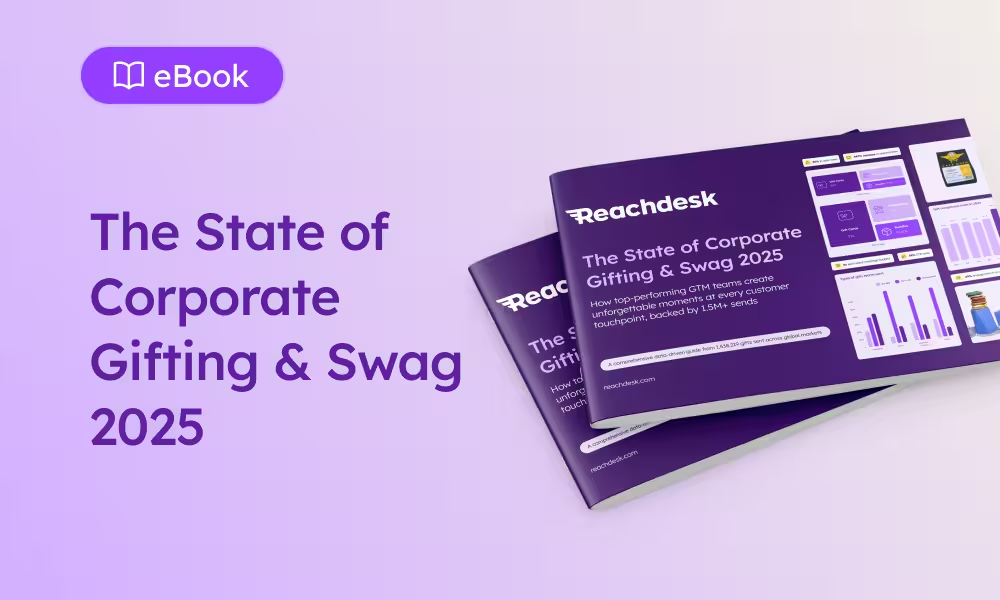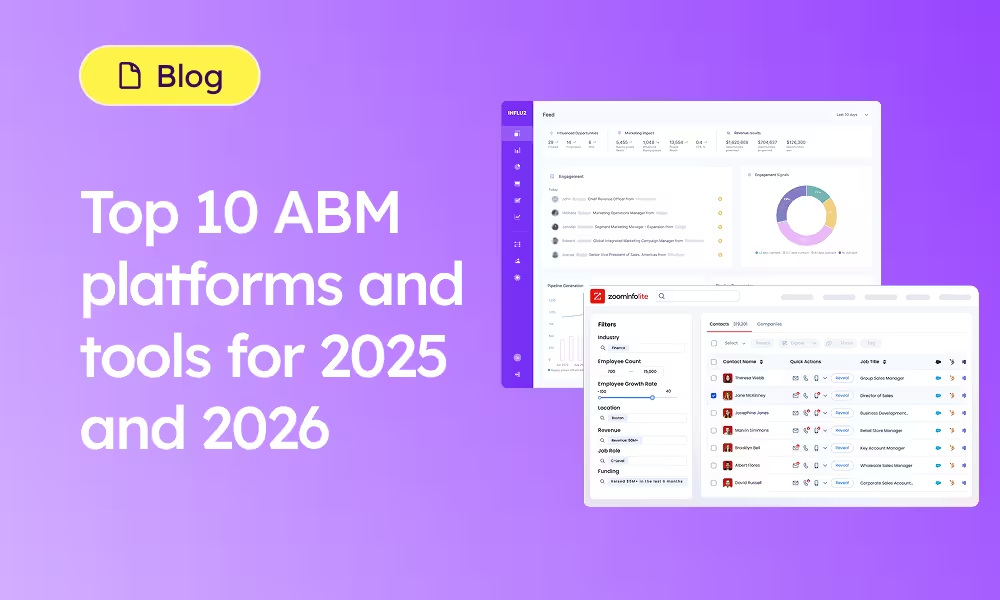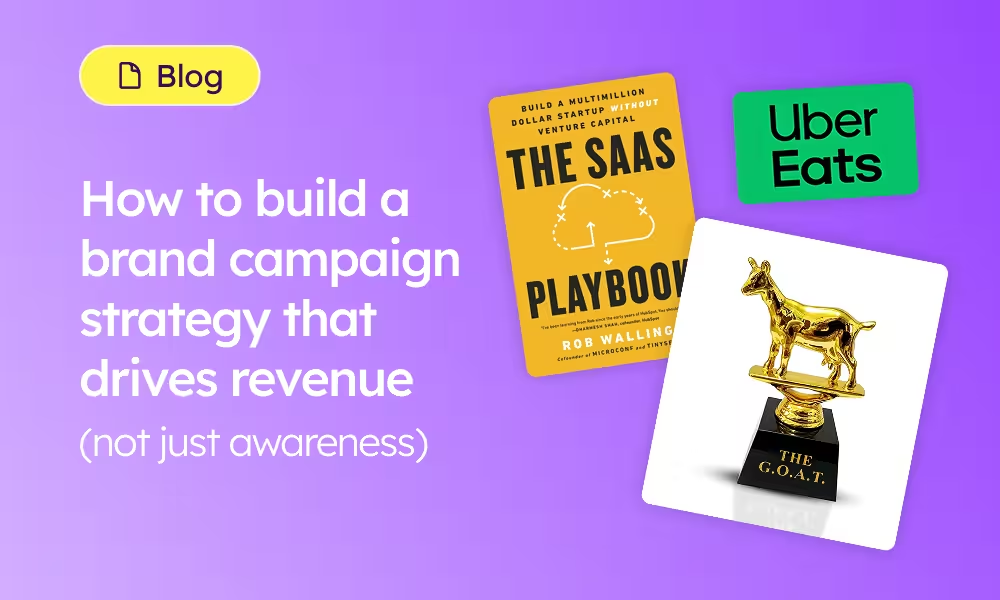One powerful platform for ROI-driven corporate gifting, swag, and engagement at scale.
It's likely you're reading this because; 1) you're looking to optimise your existing physical direct mail campaigns; 2) you’ve committed some big numbers to your business and promised results from a channel that you believe can deliver; or 3) you're curious and want to find another way to break through to your prospects and customers.
At first it can be difficult knowing where to start and how the process should evolve. To create successful direct mail campaigns as part of a multi-channel strategy, there can be so many moving parts. Here are 10 steps to help you execute direct mail and gifting campaigns that deliver the results you need and address those important business issue
1. Get internal buy in
If your business is already keen to surprise and delight prospects and customers with the trusted physical mail and gifting channel, skip to Step 2. If not, it's essential to get everyone to understand what you're about to undertake. For every new initiative there's often a champion leading the project. If you're the one pioneering a new idea, there's nothing worse than flying solo without your colleagues' support. Physical mail and gifting can seem like an old school method that's outdated. This might help get your teammates thinking differently.
2. Set goals
Although direct mail has the highest response rate, it's important to manage expectations and set realistic goals. If it’s your first direct mail campaign perhaps start small and address one or two key business issues. For those seasoned veterans out there, you might be looking to address multiple stages throughout your entire buyer journey so you can really move the needle.
It’s usually a good idea to arrange an internal meeting to agree objectives and goals with other teams and ensure they are "SMART": Specific, Measurable, Attainable, Realistic and Time-based.
The ultimate objective is for your recipients to buy your product. To arrive here, you need to agree on key drivers for each mailer so you have clear goals to work towards, such as:
- Building brand awareness - essential for companies trying to break into new territories or launching a re-brand.
- Lead generation - investing in new customer acquisition? Strong CTAs drive the leads you need to fill the top of the funnel.
- Signing up for a free trial - signups for free products can often be the starting point for long-term customers.
- Reduce demo drop-off - no-shows waste time and money. Reward customers for their time and reduce your discovery call or demo drop-off in return.
- Booking meetings - direct mail can help you get in front of key decision-makers. If you do it well, your follow-up can tee you up for that perfect opener to get you the important meeting with that key stakeholder.
- Increasing CLTV - upselling, expansion and retention are becoming a hot topic given the amount you've spent on acquiring that customer. Market to your existing customers to gain a larger share of their wallet.
You might also be thinking about reducing the manual load of doing direct mail internally, tracking the ROI of campaigns, and managing budgets, which can all be done using Reachdesk's Integrated Mail Marketing Platform.
3. Choose your audience wisely
Focus on your ideal customer profiles and the personas you need to reach within a target account. Sending something physical incurs an additional cost, but if sent to the right person, with the right message, at the right time you’ll reap the rewards.
Focus on what are you trying to achieve. Are you looking to:
· Build awareness – target a larger audience in your ICP. Focus on a selection of personas in a given target account to widen the net.
· Book meetings with key decision makers – focus on C-level prospects or senior decision makers.
· Close deals with forecasted accounts – segment your audience by revenue potential and the probability of closing.
· Upsell to existing customers – focus on the power users, accounts that are coming up for renewal or companies that have potential for expansion.
· Engage lapsed accounts – surprise and delight the accounts that have stopped using your product or services and could use a nudge in the right direction.
Quick tip: Need to get more than 1 stakeholder talking to another stakeholder in a target account? Send 2 individuals something that only works if they meet one another in person internally.
4. Map out your buyer journey
60% of buyers want to speak to a salesperson after suppliers have been researched and shortlisted (Hubspot). If you can be first to the party, rather than wait for buyers to raise their hand, you stand a better chance of winning. What you are looking to do is increase engagement and assist your buyer with their purchasing decision. You need to find the right moment within a series of communications so you stand the best chance of breaking through.
Quick tip: Best practice is to include direct mail at the first stage of any outbound cadence of communications if they are a prospect.
5. Assign budget
The knee-jerk reaction is for funds to pay for direct mail and gifting should come out of marketing’s budget. That often doesn’t sit right if the items being sent have come from an SDR or Account Executive. Shared budget across departments is becoming more common.
When you've agreed where budget will come from, calculate the number of target individuals, their seniority (higher value gifts for the C-suite) and the value of the deal you are looking to influence with the given campaign. If your average deal size is £100,000 per year, adding £50 to your acquisition cost is a drop in the ocean.
6. Data cleanse
Unlike an email, direct mail won’t bounce or hit a spam folder. However, not all CRMs were configured equally. It’s essential that your contact data is clean. This includes first name, last name, business address, country and account name. Verify that the individual you are sending to is in the correct office. Very importantly, be prepared to follow up. Email and phone data also needs to be clean and easily accessible so that once your item lands, you’re prepared to continue the conversation.
7. Design your campaign
This is often the hardest part as the possibilities are endless. To achieve maximum results, the message and creative needs to be personalised. Creating a 1-1 personal relationship is key to get optimum response rates. We recommend each item is sent with a personalised note. The message needs to be relevant, tailored to the individual recipient and must be from an individual and not from your company name.
Part of the joy of receiving a gift in the post is the unveiling, so make it engaging and exciting. Getting the packaging right is half the battle.
Now you’ve got to think about what to send. This ties back to the objectives you set at the start. Are you trying to open new doors? If so, think about sending gifts or something sweet along with content designed to educate your buyer. For existing customers you want to reward for their loyalty, it’s less about the content and more about the gift itself.
Campaigns can range from large mailers boxes in your company branding with gifts, case studies, brochures, chocolates and branded swag, to personalised wine, branded cupcakes and gift cards. Sometimes sending a one-off unique gift can be the difference between you and your competition.
Finally, make sure there is a clear CTA. Do you want them to visit your site to book a demo? Are you inviting someone to an event and they need to sign up for tickets? Make it easy for them to take the next step.
For many, creating direct mail and gifting campaigns is a new thing. Using direct mail and gifting specialists who can advise you on the types of campaigns that will work for your business as well as managing budget and sourcing items could be the game-changing resource you need. If you need more inspiration, here are 10 revenue-generating campaigns to help you get started.
8. Execute
If you want to manually pack boxes, print labels, hand write each note, stand in the queue at the post office, manually log each send in your CRM and sit in spreadsheets trying to calculate ROI then perhaps you’ve got too much time on your hands.
Using Reachdesk there are 3 ways to execute direct mail and gifting campaigns:
1. Triggered campaigns – using mail marketing automation it’s now possible to send items based on triggers such as Closed Won, Contract Renewal Date, Webinar Attended, CRM stage changed, and many more. Direct mail can now be triggered to match your customer lifecycle. It’s like making money in your sleep.
2. 1-to-1 sends – SDRs, Sales Reps and Account Managers often need to send individual gifts or messages to selected recipients. Hyper-personalising the gift and message will surprise and delight each recipient. The effort required to pull this off is minimal using a number of integrations with tools like Salesforce, SalesLoft and Outreach.
3. Mass mailers – large mass mail campaigns still have their place provided the content and messaging is still relevant to recipients. Using your Marketing Automation or CRM system, segments can be built within Reachdesk and items sent to selected audiences. You can still do the old school methods of uploading a list.
And that’s it! Your mailers have been sent without much effort required. Oh wait, there are still 2 key stages.
9. Be prepared to follow-up!
If you’ve got your data ducks in a row, you should have the right information and tasks set up so your sales reps can follow up. Rather than the generic “did you get my last email?”, you have some context to work with as it should be sitting there, right in front of their eyes. Provided your campaign has been carefully crafted, your response rates and level of engagement should go through the roof.
10. Measure what matters
Revenue is often the end goal but there are other metrics that could have a positive knock on effect: lead score, digital channel engagement, demo show rate, call connection rate, email open rate, deal velocity, close rate, renewal rate, upsell value, partner deals closed, adoption of your product etc. Measure what matters so you can gain the hero status you deserve.
Conclusion
As you can see, there’s a fair bit of planning to do so you can ensure success from direct mail and gifting. You’ll know what will work best for your target audience. If you’re still unsure about getting started or want to optimise your existing campaigns, get in touch with one of our Campaign Consultants for a free consultation.









